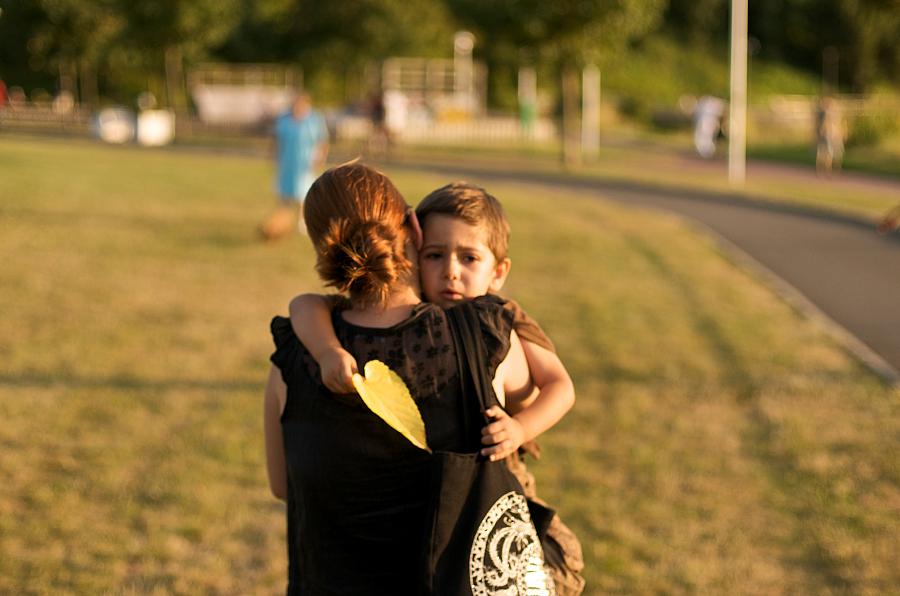We know toxic stress is damaging to kids, but how do we fight it?

Parents can buffer childhood stress.
Over time, the wrong kind of stress deforms young lives. Such stress often comes about when kids are exposed to traumatic experiences –abuse, neglect or parental addiction, for example. Researchers are finding that these early bouts with adversity have the power to disfigure young lives in lasting ways. As a general rule, the greater the stress and adversity you endure as a child, the more likely you’ll develop a whole Pandora’s box of health and social problems later in life.
Rigorous research has shown the connection, and as a result, there’s a growing awareness of “toxic stress” and “adverse childhood experiences” among researchers, nonprofits and health journalists. But in terms of policy and clinical practice, it’s not always clear how to respond. On the one hand, experts can point to several evidence-based therapies and interventions that have been shown to undo some of the effects of toxic stress and childhood trauma. On the other hand, one of the field’s leading figures routinely makes the case that we’re not doing enough, that we need bolder, more forward-thinking approaches.
That latter argument was made earlier this year by Dr. Jack Shonkoff of Harvard’s Center on the Developing Child. In an editorial in JAMA Pediatrics, Shonkoff points to the big gains made in treating children with cancer and cystic fibrosis, in contrast to “the limited extent to which new discoveries in neuroscience, molecular biology and epigenetics have catalyzed more effective strategies to reduce the biological embedding of early adversity.” Shonkoff calls it an “indefensible contrast.”
That’s a clarion call to researchers to get to work on more effective early childhood interventions. It will take time for the fruits of any new labors to ripen. But what practices have already gained traction?
At the broadest level, the programs that have been shown to work tend to focus on the adults, along with the child. Successful home-visiting or parent mentoring programs emphasize the importance of responsive, caring, protective adults in a child’s life. Experts say that making kids feel safe, attached and attended to can buffer the effects of toxic stress. That’s why building adult’s skills and capacities has emerged as a leading idea for combatting stress and adversity.
One of the most well-known efforts to tackle toxic stress got underway at the Bayview Child Health Center in San Francisco’s Bayview-Hunters Point, a predominantly African American neighborhood with a reputation for gang violence, industrial pollution and generational poverty. The clinic’s director, Dr. Nadine Burke Harris, has described the original Adverse Childhood Experiences (ACE) study as a major revelation that shifted her practice to focus on screening and treating patients for the litany of adverse experiences they face daily. For the past half decade, she has been refining a clinical practice that views patients through an “ACEs-informed lens.”
At the Center for Youth Wellness, Burke Harris is seeking “to create a clinical model that recognizes and effectively treats toxic stress in children and to change the standard of pediatric practice in our nation.”
The center employs a therapy called child-parent psychotherapy. The practice, pioneered by Alicia Lieberman, director of the Child Trauma Research Program at UCSF, typically takes place over a year and seeks to strengthen the bond between a child and caregiver. As the program describes its approach:
This therapy is aimed at improving the parent-child relationship, at helping both parent and child better modulate their feelings, and at helping the parent understand the child’s experience so that the parent can become more effectively protective.
Child-parent psychotherapy is also a key part of the well-regarded Child First program in Connecticut. (The New York Times wrote about Child First last year.)
“CPP works,” Harris Burke wrote in a blog post last year. She added:
Unfortunately, too few clinicians know how to identify the symptoms of toxic stress in the primary care setting, and even fewer have access to trained specialists who are able to do this healing work.
Getting more clinicians to screen for toxic stress is still a work in progress. Since the American Academy of Pediatrics published two major reports on the condition in 2012, the organization has backed a new approach that focuses on prevention, screening and treatment of toxic stress in children.
Screening is crucial, but there is still no official playbook for treating ACEs or toxic stress. A better understanding of how adversity becomes embedded in the body – and how best to pry it out – could have huge public health implications.
Dr. Robert Anda, an internist and epidemiologist who conducted the original groundbreaking ACE study with Dr. Vincent J. Felitti, told the New York Times’ David Bornstein last year, “To my mind, it’s the most important opportunity for the prevention of health and social problems and disease and disability that has ever been seen.”
That’s a staggering claim. But even if we allow for a little exaggeration here, taking toxic stress and childhood adversity as seriously as a disease could change lives.
For journalists, there’s tremendous potential for moving stories about attempts to foster transformation in families and children damaged by harrowing ordeals. But those stories should be more than compelling personal narratives. They should focus on new treatments or programs that are showing particular promise – and have the data to prove it.
Photo by Mario Antonio Pena Zapatería via Flickr.
Related posts
Preschool is important, but years before are crucial
Leading Early Childhood Expert Seeks Missing Breakthroughs
Video Engages Viewers In New Child Development Theory
New Study of Classic Early Childhood Program Shows Big Health Gains
